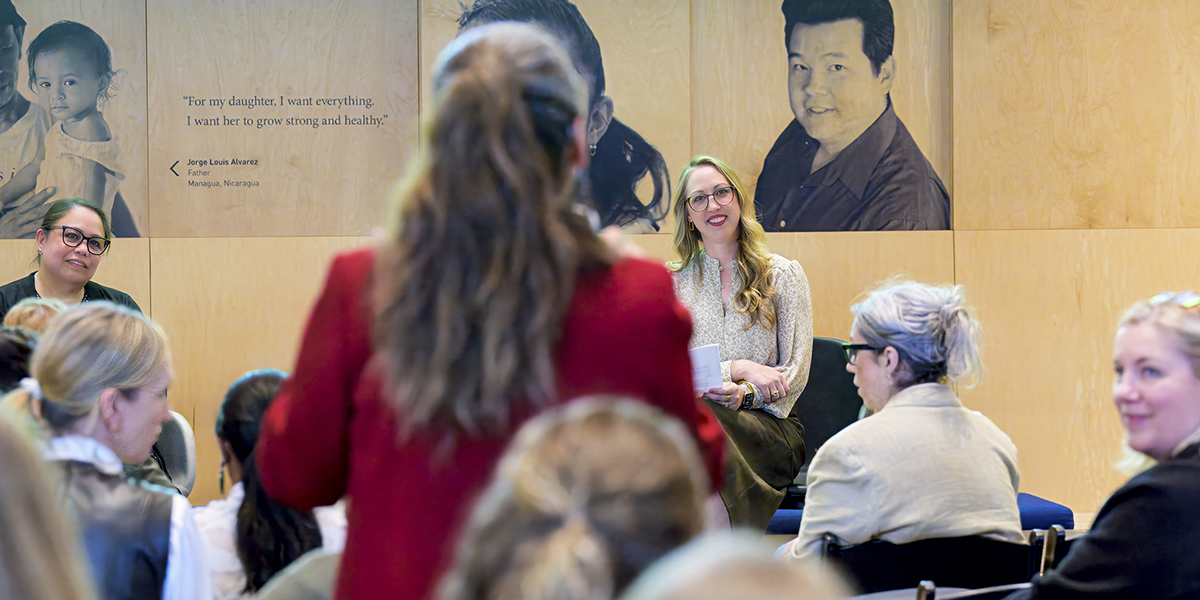On paper, the concept of maternity leave is simple. New mothers step away from their employee roles for a set amount of time knowing their positions will be there for them when they return. The reality is often a bit more complicated — on both sides of the equation.
A recent study from the Society for Human Resource Management (SHRM) revealed that 60% of organizations offered 12 weeks (about 3 months) of maternity leave and 33% offered longer leaves. This is reassuring news for expecting and future parents everywhere, but the data here does not touch on common challenges related to maternity leave backfill arrangements, many of which could be avoided by taking a more holistic and individualized approach.
Too often, organizations fail to establish thoughtful plans before team members take a maternity leave, forcing hurried temporary backfill decisions, delegation to colleagues who are already at capacity or a disruption to key workstreams. When team members return, they are apt to find their organizational roles in disarray, with various tasks parted out to other team members and that they’ve lost all the progress they’d been making toward organizational goals before their leaves. This can leave the returning individual, their peers and organization reeling.
Clearly, it’s in everyone’s best interest to take a careful approach to finding the best fit possible. That’s why Lions & Tigers takes a multi-pronged approach to finding that fit. Our goal is to find solutions that not only ensure work gets done during maternity leaves, but that team members feel valued before, during, and after and that the business continues to achieve key goals.
Having an open conversation ahead of maternity leave leads to all kinds of benefits, including giving team members an opportunity to voice what they value most about their roles and to stay future-focused on their long-term goals. At L&T, we have found that these three questions have proven exceptionally helpful for arriving at the optimal approach for supporting team members preparing for maternity leave.
1. What business outcomes or key milestones is the backfill person going to support while you are out of the office?
More than gathering a simple list of duties assigned to the team member, this question gives us context about why this person specifically is valuable to the organization from a business perspective. This information helps us work with organizations to establish a suggested timeline aimed at creating the greatest business impact.
From here, we can establish a set of defined objectives that help our backfill person deliver truly impactful contributions that lead to an easier transition for the team member when they return from maternity leave.
2. What are you not accomplishing today?
Ahead of maternity leave, we find out what the team member is actively working on but is yet to achieve — the part of their role they’d like to see progress against when they return, including the tasks sitting on their to-do lists that they haven’t had the capacity to complete.
When we know more about specific tasks a team member would like to accomplish, we gain insight into the best structure for the backfill arrangement. Do we need a one-to-one approach or something more creative that can lead to a client delight opportunity? This is a place where we often see some growth opportunities and where fresh, creative approaches can make a world of difference.
3. When you return, what does success look — and feel — like?
When this person comes back into their role, it will take a little time to get ramped up. It’s helpful to inquire about what “success” for them will look like, and what it will feel like to them on a personal level.
When exploring this question, it can be insightful to dig into sub questions like:
- Are there systems or processes that you follow today that you want to make sure are exactly intact, where nothing has changed?
- Are you hoping the backfill person can make some progress against improving the way in which you work, including cross-functional roles?
- Is there a key goal that you have for yourself that you’d love this person to support helping you to get there?
Here’s a typical scenario:
Kaylen, a public relations specialist specializing in MedTech product development is preparing for her upcoming maternity leave. She communicates the following specific key goal to Brook, a Lions & Tigers associate who will cover parts of her role while she is away:
“I would like to see progress made toward my goal of gaining traction with Tier One Media with a product-focused message. When I return, I’d like a rundown of how you accomplished this goal.”
This approach ensures that Kaylen retains true ownership over her role. It’s important to acknowledge that maternity leave situations can bring up a great deal of fear (and sometimes, ego-driven behavior) — frankly, it can be scary to abandon a role after pouring so much time and care into it, often for many years ahead of maternity leave.
It’s not uncommon for a team member to fear that someone will step in and do their job better or to feel dissatisfied with the way the work was completed while they were gone. Getting in front of these dynamics before they play out can help lay the groundwork for multiple backfill possibilities that support and affirm the team member’s ongoing efforts.
A holistic approach to planning for maternity leave nets tangible benefits.
Asking these three questions helps to fuel an actionable conversation focused on how to solve maternity leave backfill scenarios in meaningful ways. Positive business and peer impacts and talent retention are key outcomes of considering maternity leave with a holistic approach that incorporates wide-ranging stakeholder feedback from the employee planning for her leave, her fellow team members and others.
Business impact
By digging into how the employee’s role fits into the larger picture and identifying key goals to accomplish during the leave, a smart backfill plan can be created that not only bridges the gap, but continues to add value in line with overarching business goals. Instead of pausing important projects and putting those outcomes at risk, employers can develop backfill plans focused on specific goals aligned with business outcomes, including multiple backfill workers who split up duties on a part time basis. This is where specialization comes in and why it is critical to partner with a leave specialist who takes time to understand your business outcome expectations and needs during a maternity leave.
Peer Impact
Ideally, backfill workers will seamlessly fit into your team (though we know no one can truly replace your valuable team member). A holistic approach that incorporates the key questions above helps to ensure that selected backfill workers will be the best fit for your specific team — people who have a familiarity with the nuts and bolts of your industry and who have experience with quickly getting up to speed. Each of these aspects leads to a better experience for peer team members, who will greatly benefit from a plan that has been carefully crafted to take into account the needs of the whole business unit.
Talent Retention
A holistic approach to maternity lays the groundwork for a plan that results in favorable outcomes for the business, team members, and ultimately, the employee taking her maternity leave. Employees who feel that a strong plan is in place feel more enthusiastic and confident about returning to their role, knowing that they won’t be returning to chaos or unfinished tasks that should have been completed in their absence. A holistic approach ensures employees have an opportunity to dissect their day-to-day duties and their overarching impact on the business, leading to strong, impactful backfill hires.
Successful maternity leaves require a lot more than just a warm body to fill a seat for a few months. At Lions & Tigers, we can put together a fractional approach that pulls in multiple talents to fulfill various aspects of a team member’s role, including subject matter experts who take on specific functions part time while other backfill associates tackle different key duties.
Ultimately, our goal is not only to keep people in work doing the work they love, including those working as consultants and as employees, but to help accelerate their career when they are back at their desk. We want team members to feel fulfilled and valued and have continued economic access in the process. For us, that means supporting anyone who’s going on leave with a return plan and backfill scenario that’s best for them and for the organization.
Learn how Lions & Tigers can help you find the right mix of talent to support your valued team members as they transition to and from maternity leaves.








0 Comments